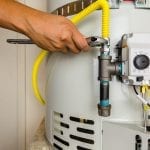Best Practices for Maintaining Your Home's Hot Water System
SourceAre you hunting for guidance concerning How to Maintain a Hot Water Heater in a Few Simple Steps?

Hot water is necessary for daily comfort, whether it's for a revitalizing shower or washing meals. To ensure your hot water system runs successfully and lasts longer, normal upkeep is essential. This post provides useful ideas and understandings on exactly how to keep your home's hot water system to prevent disruptions and costly repair services.
Intro
Preserving your home's warm water system could appear difficult, yet with a few straightforward steps, you can guarantee it operates efficiently for years ahead. This guide covers every little thing from understanding your warm water system to DIY upkeep tips and recognizing when to hire expert aid.
Significance of Keeping Your Hot Water System
Normal maintenance not just extends the life expectancy of your warm water system but also ensures it runs successfully. Disregarding maintenance can result in reduced effectiveness, greater energy bills, and even early failing of the system.
Indicators Your Hot Water System Needs Maintenance
Knowing when your hot water system needs interest can protect against significant issues. Look out for signs such as inconsistent water temperature, odd sounds from the heating system, or corroded water.
Recognizing Your Hot Water System
Before diving into maintenance tasks, it's useful to comprehend the fundamental elements of your warm water system. Normally, this consists of the hot water heater itself, pipelines, anode poles, and temperature level controls.
Month-to-month Upkeep Tasks
Normal month-to-month checks can aid capture small problems prior to they intensify.
Purging the Hot Water Heater
Purging your water heater eliminates sediment accumulation, enhancing effectiveness and extending its life.
Checking and Replacing Anode Rods
Anode rods prevent corrosion inside the tank. Inspecting and changing them when broken is critical.
Evaluating and Readjusting Temperature Level Settings
Changing the temperature settings ensures optimum efficiency and security.
DIY Tips for Maintenance
You can perform several upkeep jobs yourself to keep your hot water system in leading condition.
Checking for Leaks
Routinely examine pipes and connections for leaks, as these can lead to water damage and higher bills.
Testing Stress Alleviation Valves
Checking the stress safety valve ensures it works correctly and avoids excessive pressure buildup.
Shielding Pipelines
Shielding warm water pipes decreases heat loss and can save power.
When to Call a Specialist
While do it yourself maintenance is useful, some issues call for specialist know-how.
Complex Concerns Needing Professional Aid
Examples consist of significant leaks, electric problems, or if your hot water heater is regularly underperforming.
Routine Specialist Maintenance Conveniences
Expert upkeep can consist of thorough inspections, tune-ups, and making certain conformity with safety standards.
Verdict
Routine maintenance of your home's warm water system is vital for efficiency, long life, and expense savings. By adhering to these ideas and understanding when to look for expert help, you can make certain a trustworthy supply of hot water without unanticipated interruptions.
How to Maintain an Instant Hot Water Heater
Before tinkering with your hot water heater, make sure that it’s not powered on. You also have to turn off the main circuit breaker and shut off the main gas line to prevent accidents. Also turn off the water valves connected to your unit to prevent water from flowing into and out of the appliance. 2. When you’re done, you have to detach the purge valves’ caps. These look like the letter “T†and are situated on either side of the water valves. Doing so will release any pressure that has accumulated inside the valves while at the same time avoid hot water from shooting out and burning your skin. 3. When the purge valves’ caps are removed, you have to connect your hosing lines to the valves. Your unit should have come with three hoses but if it didn’t, you can purchase these things from any hardware or home repair shops. You can also get them from retail stores that sell water heating systems. Read the user’s manual and follow it to complete this task properly. When the hosing lines are connected, open the purge port’s valves. 4. You should never use harsh chemical cleaners or solutions when cleaning your unit. Make use of white vinegar instead. It should be undiluted and you’ll probably use about 2 gallons. 5. Now flush your water heater. This task should probably take about 40 minutes. We can’t give you specific directions for this because the procedure is carried out depending on the type, model and brand of your heater. With that being said, refer to the user’s manual. 6. When you’re done draining the unit, you have to turn off the purge port valves again. Remove the hosing lines that you earlier installed on each of the water valves. Put the valve caps (purge port) back in their respective places and be very careful so as not to damage the rubber discs that are found inside these caps. 7. Now that everything’s back in place, check your user’s manual again to find out how to reactivate your water heating system. 8. Once it is working, turn one of your hot water faucets on just to let air pass through the heater’s water supply pipes. Leave the tap on until water flows smoothly out of it. https://www.orrplumbing.com/blog/2014/september/how-to-maintain-an-instant-hot-water-heater/

I'm very drawn to How to Maintain Your Water Heater & Prolong its Life and I really hope you enjoyed my page. Sharing is good. You just don't know, you may very well be doing someone a favor. Thanks so much for going through it.
This Site